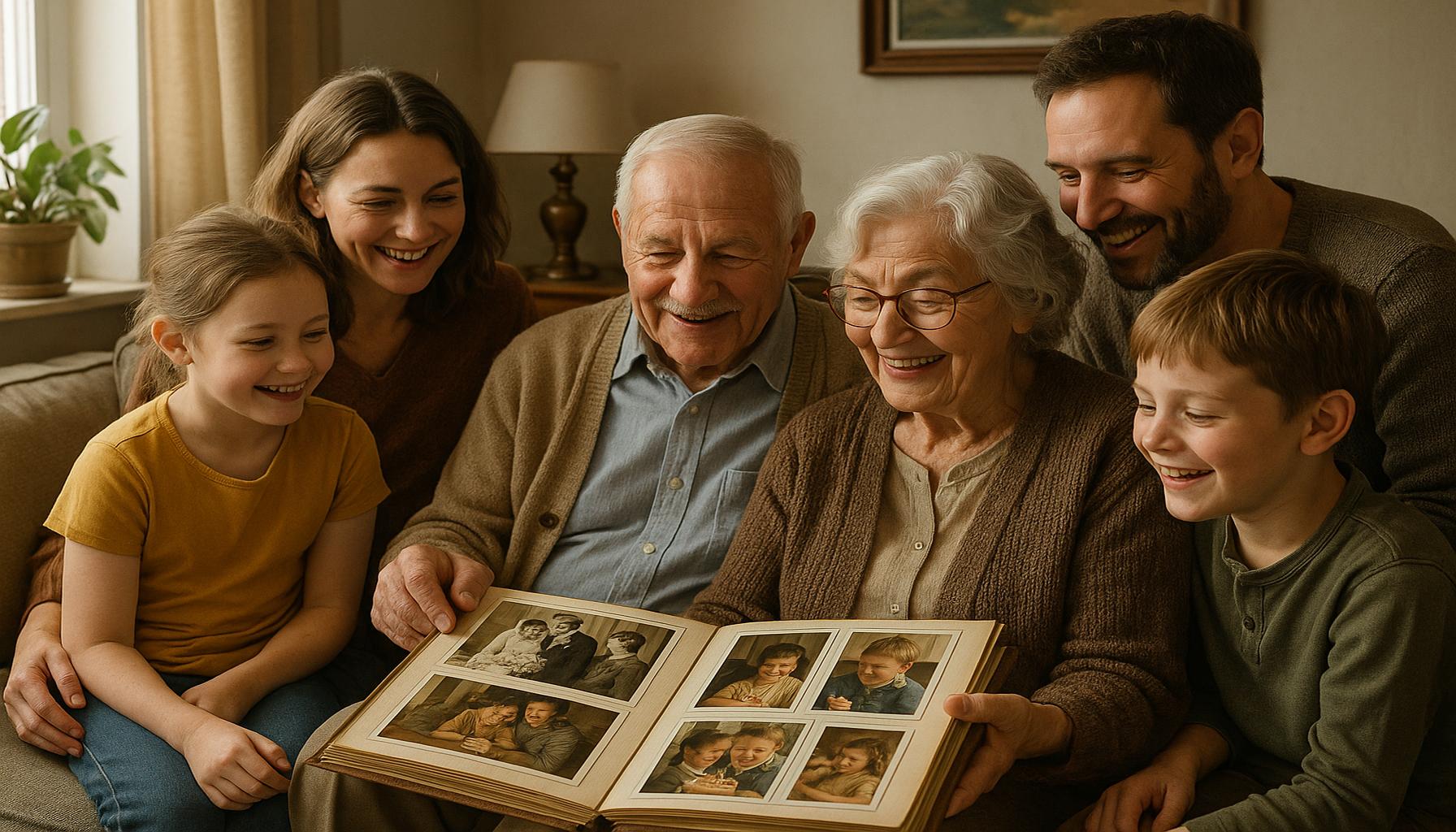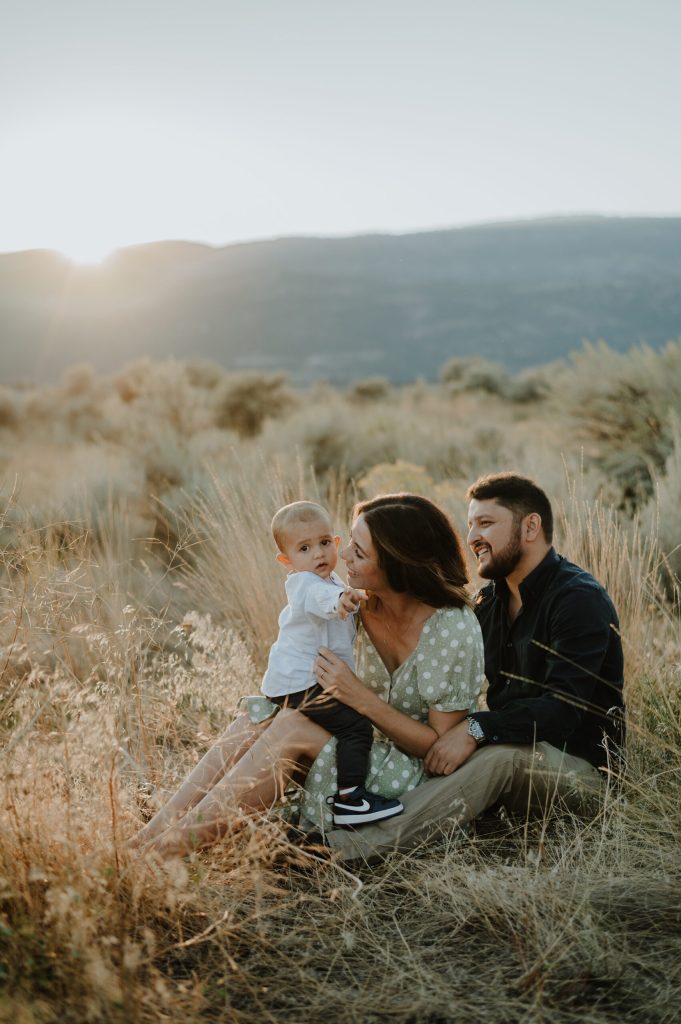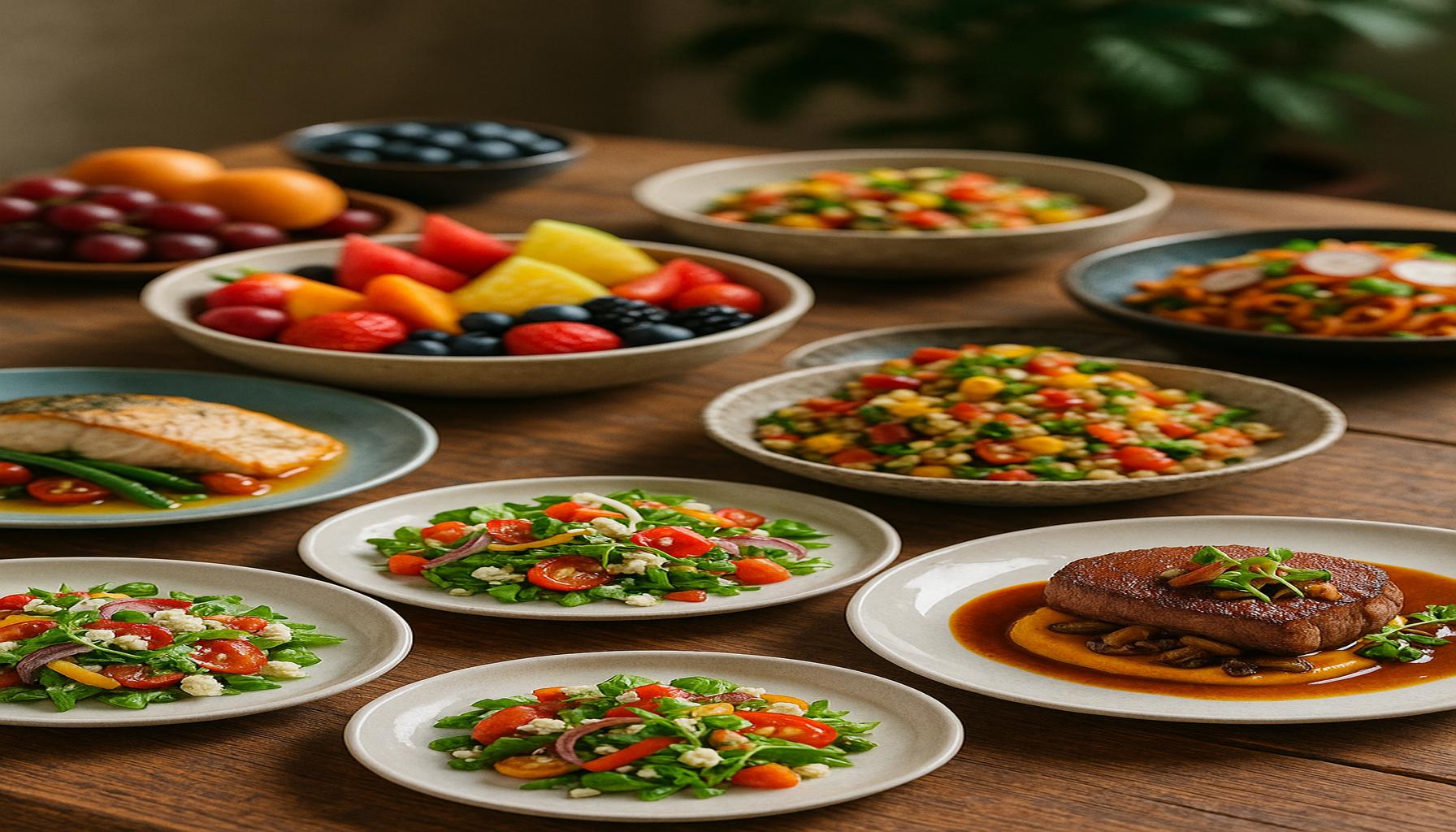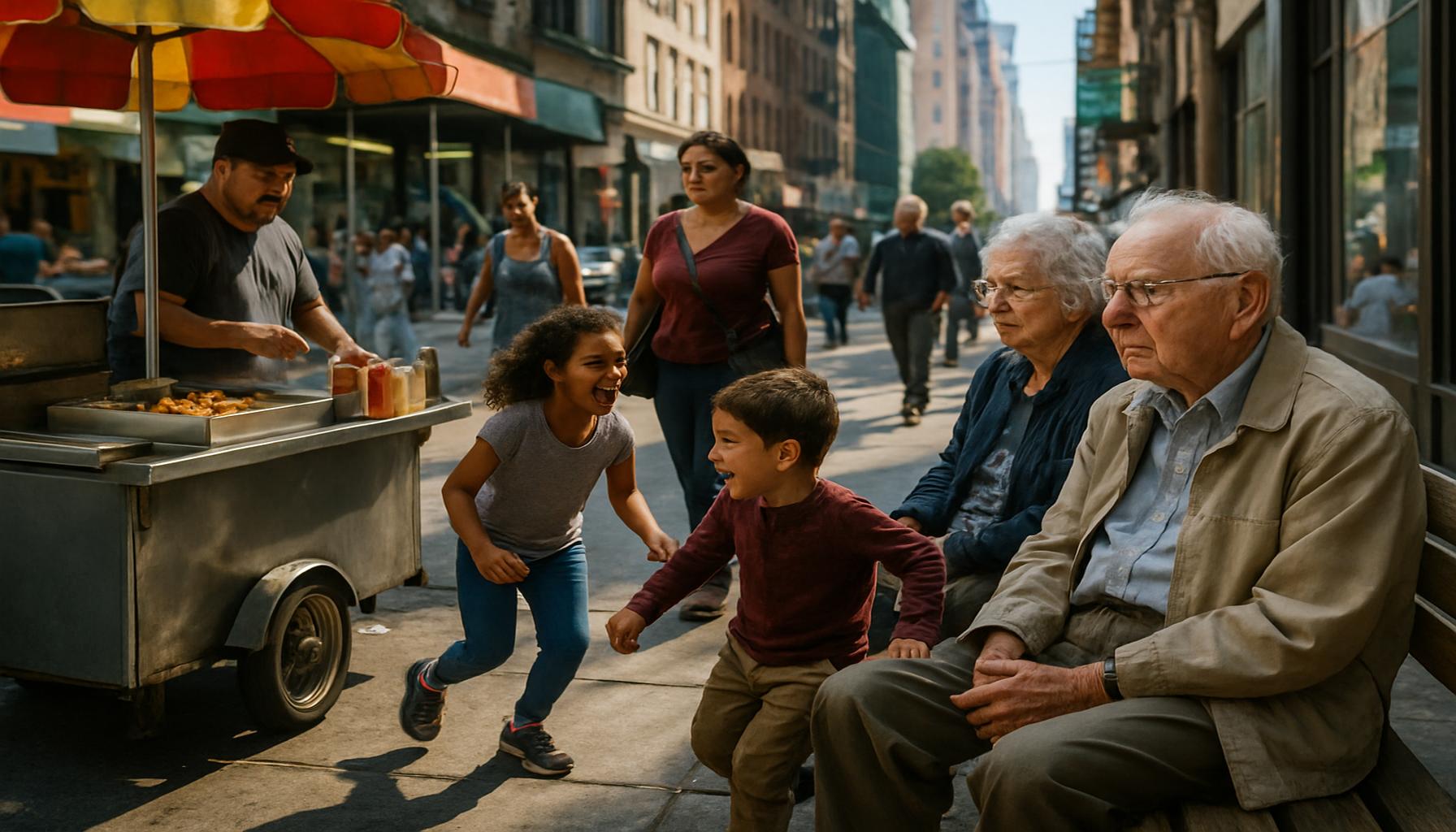Family Photography: How to Create a Memory Album That Tells Generational Stories

The Importance of Family Albums
Every family has a story to tell, woven through memories that span generations. Creating a memory album is not merely a task of collecting photographs; it entails curating a narrative that encapsulates your family’s unique journey. These albums can become the backbone of family history, showcasing not only visual memories but also accompanying tales that connect each member to their roots.
Photography serves as a powerful medium to capture fleeting moments that, if overlooked, might otherwise fade into obscurity. Here’s why family photography can be a transformative experience:
- Connection: It creates a bridge between past, present, and future generations. A photograph of a great-grandparent can evoke curiosity in grandkids about their lineage, while unseen stories unfold through their expressions.
- Legacy: A well-crafted album becomes a treasured family heirloom, passed down through the ages. Imagine your children sharing your album with their own children, igniting a sense of belonging and continuity through generations.
- Identity: This collection reflects cultural and familial identities that shape who we are. It preserves traditions, languages, and values, showcasing how they evolve through the years. For many families in the U.S., this could mean highlighting significant cultural festivals or rituals that honor their heritage.
In the United States, family photography has evolved into a rich tradition, reflecting the nation’s diversity and cultural tapestry. Different regions have their own unique influences and styles—think picturesque family beach photos from California or cozy cabin portraits in the Appalachian mountains. From candid backyard shots to formal portraits, each photograph contributes to the larger picture of your legacy.
Essential Elements of a Family Album
As you embark on the journey to create your memory album, consider the essential elements that tell your family’s story. These might include:
- Significant milestones: Birthdays, graduations, weddings, and other landmark events hold special significance and mark the passage of time in your family’s life.
- Everyday moments: Don’t overlook the beauty in the mundane; family dinners, vacations, or simply playing in the park can capture the essence of family life in its genuine form.
- Shared traditions: Holidays or cultural festivities that bring everyone together can be beautifully documented. Whether it’s a Thanksgiving gathering filled with laughter or a Fourth of July picnic, these images are vital components of your family narrative.
In the following sections, we will uncover techniques and tips for creating a visually compelling and emotionally resonant memory album. From selecting the right photographs to storytelling through captions, let’s guide your family’s story with creativity and heart. By taking the time to preserve these generational stories, you are not merely documenting history; you are ensuring that the heart of your family is felt and understood by those who come after you.

DISCOVER MORE: Click here to unlock the secrets of storytelling
Crafting Your Family Narrative
Creating a memory album is an opportunity to shape a visual narrative that gives voice to your family’s history. It involves selecting images that not only capture smiles but also embody the essence of shared experiences, values, and emotions. In a world where technology can rapidly change the ways we store memories, a physical album remains a cherished keepsake, allowing families to connect through tactile storytelling.
When embarking on the journey of building your family album, start with planning. Consider which milestones and everyday moments contribute to your family’s unique story. To guide you, here are some key components to think about:
- Chronological order: Organizing your photos chronologically can effectively illustrate your family’s journey through time. Starting from milestones such as births, through childhood achievements, and onto weddings, viewers can witness growth and evolution, creating a stronger connection to each image.
- Thematic sections: Consider dividing your album into sections based on themes. Family vacations, cultural traditions, or even pets can form distinct sections that highlight the unique facets of your family’s life. This approach allows for a well-rounded portrayal of who you are as a family.
- Personal anecdotes: Every picture has a story waiting to be told. Pairing images with short captions that recount the event or describe the emotions captured in the moment can breathe life into the photographs. This practice not only enriches the viewing experience but also creates a relatable narrative that future generations can find comfort in.
- Generational connections: Incorporating photographs from older generations, such as grandparents or great-grandparents, can create a richer tapestry of your family history. These images can serve as conversation starters, igniting curiosity about the lives that preceded you and perhaps inspiring future family members to explore their heritage.
As you compile images, take the time to choose those that symbolize important memories or reflect profound emotions. A photograph may capture an extended family gathering filled with laughter or a quiet moment of reflection after a loss. Both narratives hold equal weight and contribute to the album’s overall depth. It is vital to ensure a balance between formal portraits and candid shots; the latter often reveal genuine moments that might resonate more with viewers.
Once you have gathered your photos and penned your stories, think about how to present them. The layout of your album can significantly influence its impact. Experiment with varying sizes, orientations, and placements of images to create visual interest; consider balancing full-page spreads with sequences of smaller pictures. The aim is to guide the viewer’s eye smoothly through your family narrative.
By valuing both the significant and everyday moments in your memory album, you are not just preserving images; you are charting the emotional landscape of your family. As we delve deeper, we’ll explore creative techniques to enhance your memory album, ensuring that it not only tells the story of your family but also becomes a vessel of treasured memories that can be shared for generations to come.
| Advantage | Description |
|---|---|
| Preservation of Heritage | Creating a memory album aids in preserving family history for future generations, ensuring stories are not lost. |
| Strengthening Family Bonds | Sharing the album fosters emotional connections, encouraging storytelling and remembrance among family members. |
As we delve deeper into family photography, one of the most significant advantages is the ability to preserve heritage. By capturing moments from various family events, you create a tangible record that can be cherished and revisited over time. This becomes increasingly important as families grow and change; your album will serve as a bridge connecting new generations to their roots. Moreover, the act of creating and sharing a memory album can have profound effects on family relationships. As members gather to sift through photographs, the process becomes a shared experience, strengthening emotional connections within the family. Through storytelling, laughter, and even tears, an album can reveal the nuances of familial experiences and histories, enriching the lives of all who contribute. From candid snapshots to staged portraits, each photo has the potential to spark conversations about life lessons, cherished memories, and enduring values that shape your family identity. Engaging in this creative process not only forms lasting artifacts but also reaffirms the ties that bind families together, inviting exploration of personal legacies through the lens of family photography.
DISCOVER MORE: Click here to dive deeper
Creative Techniques for Enhancing Your Memory Album
With the foundation for your family narrative in place, it’s time to explore creative techniques that can elevate your memory album from a simple collection of photographs to a captivating storytelling experience. These techniques not only enhance visual appeal but also deepen the emotional resonance of your family history, allowing you to create a meaningful archive that can be cherished for years to come.
One way to add an artistic flair to your album is through the use of photo collages. Rather than presenting each photo in isolation, consider arranging several images in a collage format that encapsulates a specific event or theme. For example, a family reunion can be represented with a vibrant collage of the day’s highlights: candid moments, group shots, and even failed selfies that evoke laughter. This approach not only saves space but also invites viewers to explore the memories more fully, engaging them in the visual narrative.
Incorporating mixed media elements into your album can further enrich the storytelling aspect. Handwriting family recipes, including postcards from vacations, or inserting pressed flowers can add a personal and tactile dimension to your album. These items can serve as mementos tied to specific memories, adding layers of connection to the visuals. For instance, a beloved grandmother’s cookie recipe can accompany a photograph of the family baking together, solidifying not just the image, but the sensory experiences associated with those moments.
Another technique to consider is the timelines method, which helps to visualize key family events in a linear format. By integrating visuals with a timeline, you are not only detailing events but are also creating an educational tool for younger generations. They can see how the past relates to their present, fostering a deeper understanding of familial relationships and shared histories. For example, a timeline featuring dates of births, marriages, and significant life events can guide readers through the family tree in a clear and engaging manner.
As you curate your album, don’t underestimate the power of photographic editing to enhance the quality of your images. Simple adjustments in brightness, contrast, or saturation can revive older photographs that might have dulled over the years. With contemporary digital tools, creating a cohesive color palette or style can enhance the overall aesthetic of your album, making it visually and emotionally engaging. This uniformity allows all photographs to tell a cohesive story, regardless of their original timestamp or quality.
Additionally, the inclusion of family interviews can serve as a powerful narrative tool. Recording conversations with family members—especially elders—can add contextual depth and personal anecdotes that photographs alone cannot convey. These interviews can be transcribed and integrated into the album, allowing future generations not only to see the images but also to hear stories about the people captured in those moments. This fusion of audio-visual storytelling provides layers of context that can greatly enhance the understanding of your family’s legacy.
Finally, consider utilizing digital storytelling platforms as an extension of your physical album. Online tools and software allow families to create digital versions of their albums, complete with animations, voiceovers, and music, making it accessible and engaging for wider audiences. Digitally archiving your family history not only protects it from the ravages of time but also enables easy sharing with relatives who may not have access to the physical album.
By employing these creative techniques in your memory album, you can effectively foster connections among family members while telling a more vibrant and interactive generational story that will continue to resonate through the years.
DISCOVER MORE: Click here to dive deeper
Conclusion
Creating a memory album that encapsulates your family’s generational stories is not just an artistic endeavor; it’s a heartfelt journey that strengthens family bonds and preserves legacies for future generations. Through the thoughtful curation of photographs, combined with creative techniques like photo collages, mixed media elements, and engaging timelines, you can craft a visual narrative that not only tells your family history but also invites interaction and connection among family members. Each photograph serves as a piece of a larger puzzle, telling stories filled with laughter, love, and lessons learned, while the integration of elements such as family interviews enhances understanding and emotional depth.
As you develop your memory album, remember to leverage modern tools and techniques, allowing for both digital and physical formats that can reach wider audiences, especially relatives who may live far away. Embracing a mix of traditional artistry with contemporary technology not only protects your family’s history but makes it accessible for younger generations to explore and appreciate. Aim for an album that is not simply a collection of images, but a rich tapestry of experiences, filled with significant moments that resonate throughout time.
Ultimately, your family photography album becomes a living document—one that narrates not just the story of your family members, but also the heritage that shapes their identities. By investing time and creativity in this project, you are establishing a treasured artifact that will be shared and cherished, ensuring that the stories of your ancestors continue to inspire and bond family members for generations to come. So embark on this rewarding journey, and witness how your family’s unique legacy can unfold through the magic of photography.


